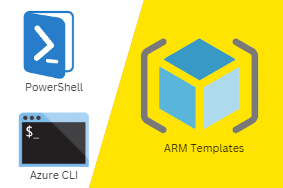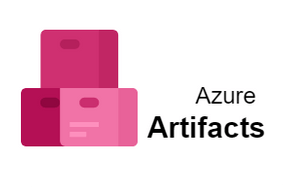Google Cloud provides an amazing set of services that can help you with all aspects of your business, from advertising to analytics to project management and more. However, it can be tricky to figure out which features are best for what situation. With this in mind, here are some tips and tricks you can use to get the most out of Google Cloud Services, as well as some resources that can help you find even more tips and tricks!
Use the right account type
You might think that once you sign up for a cloud computing service, you’re all set. But it’s just as important to make sure you choose an account type that fits your needs. As of June 2016, Google offers five different account types: Business (for commercial use by businesses), Education (for educational institutions), Consumer (for private use), Developer Platform (for software developers who want to build apps on top of GCP) and Partner Hosting (companies offering cloud hosting services). Each type has different features, but there are some benefits that are available across-the-board. One such perk is automatic backups. With every account, Google automatically backs up data stored in its storage services like Cloud Storage or Cloud SQL databases.
Get it in writing
When it comes to cloud services, there are quite a few pieces in play. You need to think about how much storage you’ll need (Google has a whole bunch of ways to get more), how much bandwidth your site might use, what is your off-site backup solution (you should have one), and whether or not you want to consider other services like App Engine or BigQuery. All of these decisions factor into your costs, so make sure that you understand every aspect before getting started. The biggest mistake with cloud services is getting started without proper planning. If all goes well, your business might be paying for decades—make sure that’s not coming out of pocket!
Read up on bandwidth policies
In addition to compute resources, you can use Google Cloud Platform to host your own data. If you do so, keep in mind that bandwidth caps apply; these are automatically enforced. The good news is that you can see how much of your limit has been used at any given time through a bandwidth dashboard. If it looks like you’re about to exceed your cap, think about which services might be using up a lot of bandwidth. Streaming video or audio? You may want to look into transcoding options or other ways of reducing overall file sizes so that you don’t hit (and potentially exceed) your cap.
Think of cost control measures before signing up
Just because a service is free doesn’t mean it will be forever. More than once, I’ve found my free options run out. Do your homework to make sure you understand how much it costs to use that service, which features are available at what price level, and what happens when you exceed your allocation. Otherwise, you could find yourself wasting time on projects that don’t help you make money or spending too much money on something without knowing it. Over time, even modest costs add up to hundreds of dollars in wasted funds each month. Google Drive : Think of cost control measures before signing up: Just because a service is free doesn’t mean it will be forever. More than once, I’ve found my free options run out.
Understand billing polices (Early termination charges, minimum commitments etc.)
Google bills its cloud customers based on usage, so it’s important to understand their various billing policies. For example, if you opt to pay with a credit card, you’ll be subject to an early termination fee if you cancel your account within 90 days of signing up. Additionally, you may not be able to switch providers immediately without incurring additional fees. Lastly, each month that your service remains active after initial sign-up also carries a minimum monthly commitment charge. In some cases, these charges will be waived if you opt for service extensions like managed services or support contracts that extend beyond one year.
Check out pricing calculator
You can use pricing calculator to find out how much it will cost you to run a VM instance, or pay as you go with per-second billing. This is good news if you’re trying to figure out whether it makes sense to spin up an instance on demand, or if you’re trying to calculate your total cost of ownership. And remember: sometimes you don’t need more computing power—you just need more time. If your app could benefit from running on spot instances, try it out—you may be surprised by how little it costs!
Optimize images before uploading them to GCS
Image optimization is something that’s often overlooked but can drastically increase your overall site speed. This can save you a ton of bandwidth usage (and thus costs) if you’re uploading images on a regular basis. If you want to keep things simple, just convert your images to lossless PNGs as they’ll still preserve all of their visual quality while taking up much less space. Once done, run them through an image compression tool like TinyPNG in order to get even more mileage out of them; image files can be reduced by up to 50% with little-to-no visible reduction in quality. It might not seem like much, but saving just 1 MB per page load will quickly add up if your website gets a lot of traffic.
Don’t overuse images in PDFs as they will be resized by GCS
For file names with spaces, use an underscore (_) instead of a space. For filenames containing special characters, remove them or replace them with ASCII equivalents (e.g., Ł → L). Don’t exceed 30 MB/file size across all objects in any bucket: GCS has a limit on how large a single object can be—currently 50 GB —and there is no option to request an increase in that cap.
Use IAM roles wisely when connecting third party services with GCS.
When you use IAM roles to connect third party services with GCS, you can often bypass needing a token altogether. This is super helpful when connecting third parties that might not have any idea how to manage tokens. You’ll need to understand how IAM roles work and how they’re used in GCS, but if done right, you don’t need a token at all. Depending on your use case, IAM roles could save you some time during development or avoid some of the hassles around managing tokens. It’s definitely worth learning more about it!
Make sure you have a retention policy
The average enterprise has about two dozen cloud apps. When building a cloud strategy, it’s important to think through how you will keep those systems up-to-date while also ensuring that your valuable data remains secure. The best way to do that is by creating a retention policy. This policy is all about deciding when an app’s life in your organization ends. You might choose to retire software after a year or two if its functionality can be easily replicated in another tool (or on premises). Or, you may decide to shut down an application that requires such heavy customization or support that it’s not worth updating it over time. To get started, ask yourself these questions: Is my business case still valid? Does my organization still need access to archived data?



0 Comments